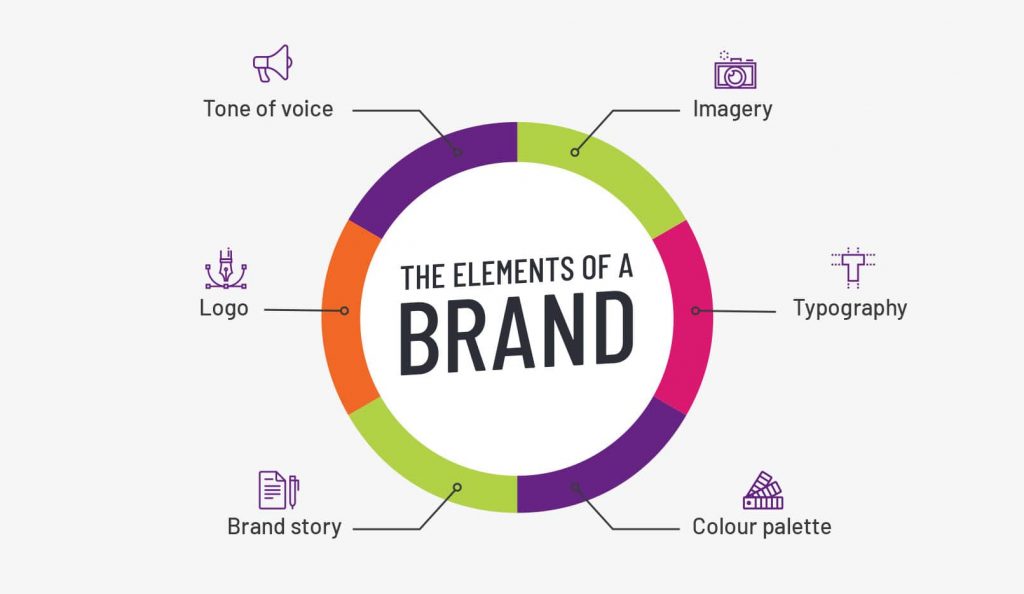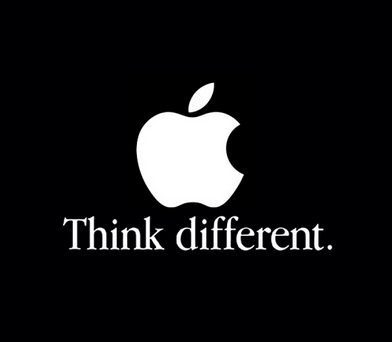Businesses over the years have engaged in strategic branding both online and offline to improve their brand reputation and recognition. However, there are specific business branding practices that prove to be more effective.
understanding many new businesses need to understand the importance of branding, we decide to offer a helping hand and in this blog post, we will discuss the top 10 tips small business must use to brand their businesses.
Let’s start by understanding what branding is before going to some of the most important tips.
Table of Contents
ToggleWhat is Business Branding
Branding is the set of operational and strategic activities concerning the management and consolidation of a brand in the market.
These activities contribute to the differentiation of a product from that of its competitors through actions ranging from the creation of distinctive signs such as name or logo to the production of branded content.
Branding activities make it possible to link a product or service both to certain distinctive signs of a tangible nature – such as name, symbols or product packaging – and to elements of an intangible nature – such as the company’s mission, values and reputation – thus enabling it to be differentiated from competing products or services.
It is a widespread practice in all sectors and for all product categories, even for those with low involvement (such as salt or fruit, for example) and can be applied not only to products, services and companies but also to events, people (we are therefore talking about personal branding) or geographical areas.
In the book “Marketing management”, Kotler and Keller define branding as the action of “giving products and services the power of a brand”, which means giving them an identity, thus communicating to the consumer why that product is different from others.
In this perspective, branding strategies allow manufacturers and sellers not only to protect themselves by identifying the origin of their products but also to promote them in an effective and differentiated way.
Branding therefore allows the desired image of a product or company to be created in the consumer’s mind, allowing him to quickly identify a brand and have a reason to choose a company’s products over those of its competitors.
In this article, therefore, we want to give you the best business branding tips so that you can better understand the actions that could be most useful for your business. Let’s get started!
Why Business Branding is important
Business branding is a key part of the vast majority of companies, as it has a direct impact on:
#1. Consumers: a brand provides consumers with a kind of shortcut to making decisions when they feel undecided about the same product from different companies.
These activities thus become a support to consumers’ decision making, as they help them structure information about different products, guiding the formulation of brand associations and ideas.
This is why they are essential to ensure customer loyalty to a particular company’s products.
#2. Employees/stakeholders / third parties: In addition to helping consumers distinguish similar products, successful branding strategies add to a company’s reputation.
This asset can influence a range of people, from consumers to employees, investors, shareholders, suppliers and distributors. For example, if you don’t like or feel tied to a brand, you probably wouldn’t want to work for it.
However, if you feel that the brand understands you and offers products that inspire you, you probably want to work for it and be part of its world.
#3. The company itself: From the perspective of the selling company, however, brands make it easier to repeat the purchase and introduce new products, as buyers are already familiar with the company’s brands, and would be more likely to buy additional and subsequent products.
Business Branding examples
We can now briefly observe some visual examples of Business Branding, adopted by important companies.
The two main tools used in Business Branding to easily reach consumers and build the identity of the company are:
#1. Symbols: Branding often takes the form of a recognizable symbol that consumers easily identify with, such as a logo.
Common examples are Nike’s “swoosh”, McDonald’s golden bows and the apple used by Apple.
Logos typically appear on all products in some form and are used in advertising and promotional campaigns.
The most successful symbols allow consumers to identify a product or company even if the name is not visible.

#2. Slogan (or payoff): Like symbols, a slogan (like the payoff) is the phrase that accompanies the brand in all its expressions, and is, therefore, the verbal element that often accompanies a company or product logo.
Payoffs are used successfully in all industries to make consumers associate products with brand values, such as “Just do it” (Nike), “Red Bull gives you wings” (Red Bull) or “I’m lovin’ it” (McDonald’s).
As with logos, successful slogans take root in consumers’ minds and can remain there for as long as the company remains in business.

10 Business Branding tips
Now we want to give you the best 10 business branding tips. Let’s take a look:
#1. Create a user experience:
Branding is also demonstrated by the user experience that companies try to create. For example, McDonald’s uses its advertising to create the image of a fun place where parents can take their children, as well as being a place for a quick meal.
It is therefore essential to try to create a unique and satisfying experience that customers can live when they enjoy a good or service from a company, and try to associate it as much as possible with the image of the company itself.

#2. Determining the business identity
It is important to remember that branding is the face of a business strategy. Each company has its own specific needs, a set of corporate values and a unique way of doing things.
Determining business identity means creating a single “voice” that reflects the same message in all communications.
The business branding strategy is an excellent channel to impose vision throughout the company and involve everyone in the same direction.
At this point business identity can come to life through a series of well planned and well executed marketing activities.
Make sure the final message is fully consistent, clear and relevant to the target audience, as well as concise and easy to understand.
#3. Use evocative and coordinated images
Visual content is a very important aspect of a branding strategy. It is recommended to use a matching set of images and illustrations that should be featured on the website, newsletter, social media and advertising (online and offline).
Selecting and using images suitable for the brand will increase the Brand’s recognizability, to the point that users will be able to associate content to the relative Brand simply by looking at it.
Another important aspect related to the use of images is the creation of a personalized, unique, consistent and equal style for all published content, such as the same size, insertion in the image of texts, which must respect certain fonts and sizes, colours and so on.

#4. Involve stakeholders, employees and customers
The tastes and orientations of the target audience are a valuable mine of information for developing a corporate branding strategy.
But it is essential to be able to transform stakeholders, employees and customers into true brand ambassadors: word of mouth can have a huge impact on the overall brand image.
The objective of a company must therefore be to create a positive environment and relationship with its stakeholders, trying to transfer to them the principles and philosophies of the company itself, so that they can in turn disseminate these elements to third parties.
#5. Define the elements that influence your brand
Your brand represents the personality of your company, and as in the case of human personalities, it expresses itself in many different ways.
This variety can be found in your logo, brand colours, graphic style and tone of voice.
Then there are the brand values, i.e. the traits that characterize your way of doing business and the thoughts, perceptions and behaviour of you and your employees.
Of course the brand is varied and destined to change over time, as it reflects the people and personalities that make up the company.
It may be useful to think of your brand as a summary or description of who you are at your best, rather than a set of rules about who you should be at all times.

#6. Think about your target audience
Your brand plays both an internal and external role. Internally, it serves to align corporate objectives, giving staff a sense of connection and motivation.
Externally, your brand determines how your business is perceived by your target audience.
By developing a business plan, a company already knows what kind of people are interested in its products and will form an important part of its target audience.
Once defined its target, it is essential to direct all efforts, both productive (product characteristics and needs to be met) and marketing (promotion and campaigns), towards the specific characteristics of the target audience.
7) Connect branding strategy to marketing
Your marketing strategy and brand are complementary, so we recommend developing them in parallel from the start.
Working with your team, you’ll need to think about which marketing channels to use, such as social media, email, website, events, presentations or content marketing, and what role they’ll play in your business plans.
Each of these channels will express your brand and offer useful information about how your business is perceived by recipients.
Marketing can influence the way your brand is perceived in a number of ways. For example, the design used, the frequency of communications, such as emails or tweets; the topics to be covered in content marketing activities, such as blogs or video channels, and the tone of voice you adopt.
8) Differentiate your brand from those of your competitors
Even if your brand reflects the identity of your business and is therefore unique, in certain areas a common branding language tends to emerge in which certain colors, fonts, illustrative styles and even the tone of voice are found in the brands of various companies.
This is not necessarily a bad thing, but it is important to keep this in mind to make informed decisions.
In particular, you need to decide if you want to follow the branding trends in your industry, or if you prefer to break the pattern and create something unique.

9) Conduct audits to keep your brand in top shape.
After developing your brand and after a period of operation, we recommend that you carry out a brand audit every six months or annually.
A brand audit is an internal procedure that allows you to monitor the degree of consistency of your brand, how much it corresponds to the way you operate and how it is perceived by your customers.
It is essential to know if the positioning of the brand in the minds of consumers has changed, and in what way, and then intervene accordingly.
10) Associate concrete advantages and emotions to the brand
The ultimate goal of branding is to associate your company with certain characteristics or emotions.
A brand can (and should) have different associations, but if so, they must all be consistent with each other. But a quality branding also associates an emotion and makes the person feel part of a group.
For example, Harley Davidson in the motorcycle market: it has an extremely powerful brand because it immediately communicates a feeling of style, elegance and classicism, but at the same time strength and dynamism.

Apple, the strongest brand in the world, leverages emotions: who buys Apple is a rebellious professional, who thinks independently, and adopts a minimalist style and simple in its effectiveness.

Conclusions
In this article, you have had the opportunity to understand the meaning of Business Branding and why it’s so important for companies that act in the market.
As you have noticed, there are many Business Branding tips to follow, and each one of them is important to grow the image, reputation, strength and importance of the company in the eyes of customers.
We hope this article has been helpful to you. You are always welcome back and visit us anytime!
See you soon!









One Response
very nice.